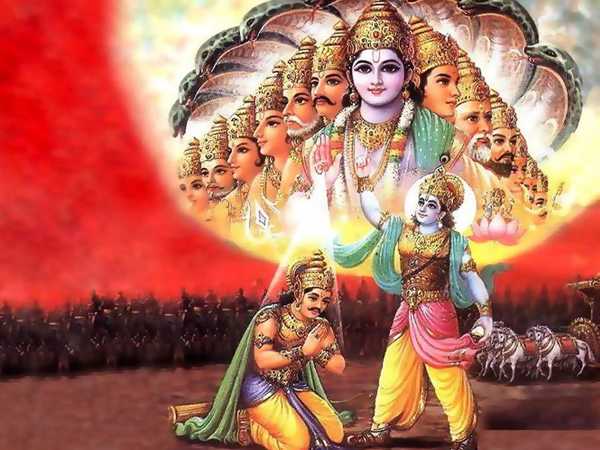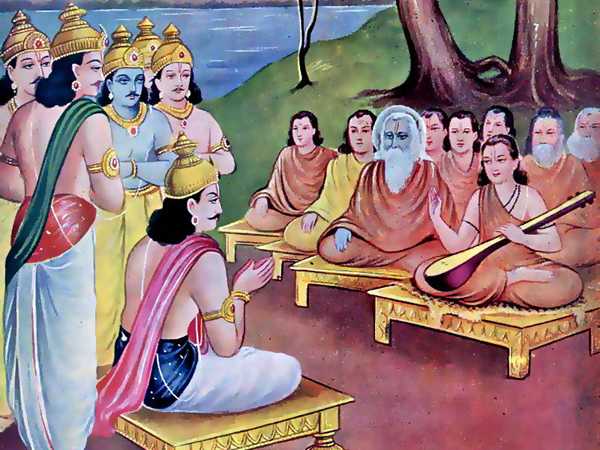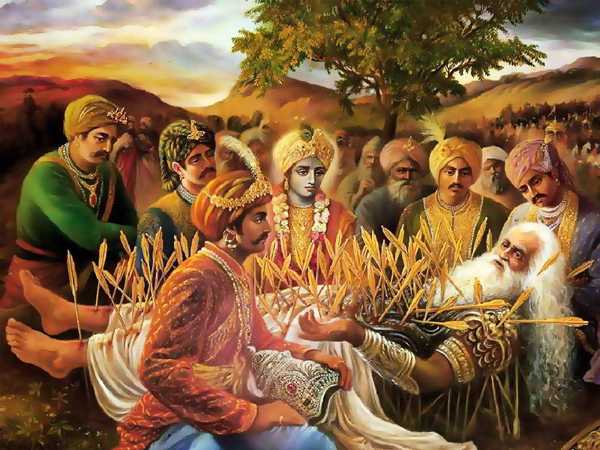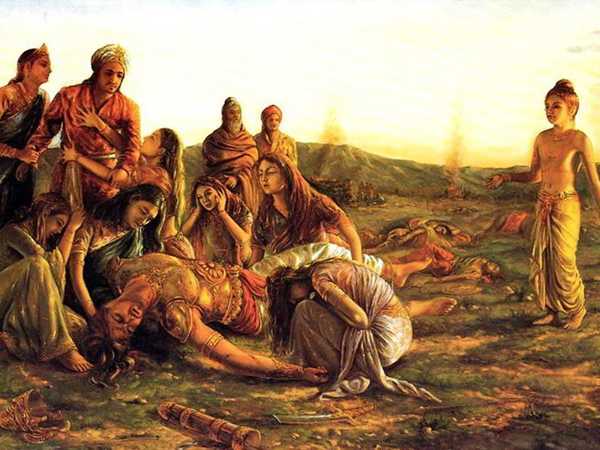Chapter 88

“Vaisampayana said, ‘Entering the palace of the Pandavas the mighty-armedprince saluted his grand-mother in soothing and sweet accents. Then queenChitrangada, and (Ulupi) the daughter of (the snake) Kauravya, togetherapproached Partha and Krishna with humility. They then met Subhadra andthe other ladies of the Kuru race with due formalities. Kunti gave themmany gems and costly things. Draupadi and Subhadra and the other ladiesof Kuru’s race all made presents to them. The two ladies took up theirresidence there, using costly beds and seats, treated with affection andrespect by Kunti herself from desire of doing what was agreeable toPartha. King Vabhruvahana of great energy, duly honoured (by Kunti), thenmet Dhritarashtra according to due rites. Repairing then to kingYudhishthira and Bhima and the other Pandavas, the mighty prince ofManipura saluted them all with humility. They all embraced him with greataffection and honoured him duly. And those mighty car-warriors highlygratified with him, made large gifts of wealth unto him. The king ofManipura then humbly approached Krishna, that hero armed with the discusand the mace, like a second Pradyumna approaching his sire. Krishna gaveunto the king a very costly and excellent car adorned with gold and untowhich were yoked excellent steeds. Then king Yudhishthira the just, andBhima, and Phalguna, and the twins, each separately honoured him and madecostly presents unto him. On the third day, the sage Vyasa, the son ofSatyavati, that foremost of eloquent men, approaching Yudhishthirasaid,–‘From this day, O son of Kunti, do thou begin thy sacrifice. Thetime for it has come. The moment for commencing the rite is at hand. Thepriests are urging thee. Let the sacrifice be performed in such a waythat no limb may become defective. In consequence of the very largequantity of gold that is required for this sacrifice, it has come to becalled the sacrifice of profuse gold. Do thou also, O great king, makethe Dakshina of this sacrifice three times of what is enjoined. Let themerit of thy sacrifice increase threefold. The Brahmanas are competentfor the purpose.[205] Attaining to the merits then of threeHorse-sacrifices, each with profuse presents, thou shalt be freed, Oking, from the sin of having slain thy kinsmen. The bath that oneperforms upon completion of the Horse-sacrifice, O monarch, is highlycleansing and productive of the highest merit. That merit will be thine,O king of Kuru’s race. Thus addressed by Vyasa of immeasurableintelligence, the righteous-souled Yudhishthira of great energy underwentthe Diksha for performance of the Horse-sacrifice.[206] The mighty-armedmonarch then performed the great Horse-sacrifice characterised by giftsof food and presents in profusion and capable of fructifying every wishand producing every merit. The priests, well conversant with the Vedas,did every rite duly, moving about in all directions. They were allwell-trained, and possessed of omniscience. In nothing was there aswerving from the ordinances and nothing was down improperly. Thoseforemost of regenerate persons followed the procedure as laid down (inthe scriptures) and as it should be followed in those points about whichno directions are given.[207] Those best of regenerate ones, having firstperformed the rite called Pravargya, otherwise called Dharma, then dulywent through the rite of Abhishava, O king.[208] Those foremost ofSoma-drinkers, O monarch, extracting the juice of the Soma, thenperformed the Savana rite following the injunctions of the scriptures.Among those that came to that sacrifice none could be seen who wascheerless, none who was poor, none who was hungry, none who was plungedinto grief, and none that seemed to be vulgar. Bhimasena of mighty energyat the command of the king, caused food to be ceaselessly distributedamong those that desired to eat. Following the injunctions of thescriptures, priests, well-versed in sacrificial rites of every kind,performed every day all the acts necessary to complete the greatsacrifice. Amongst the Sadasayas of king Yudhishthira of greatintelligence there was none who was not well conversant with the sixbranches of (Vedic). learning. There was none among them that was not anobserver of vows, none that was not an Upadhyaya; none that was not wellversed in dialectical disputations. When the time came for erecting thesacrificial stake, O chief of Bharata’s race, six stakes were set up thatwere made of Vilwa,[209] six that were made of Khadira, and six that weremade of Saravarnin. Two stakes were get up by the priests that were madeof Devadaru in that sacrifice of the Kuru king, and one that was made ofSleshmataka. At the command of the king, Bhima caused some other stakesto be set up, for the sake of beauty only, that were made of gold.Adorned with fine cloths supplied by the royal sage, those stakes shonethere like Indra and the deities with the seven celestial Rishis standingaround them in Heaven. A number of golden bricks were made forconstructing therewith a Chayana. The Chayana made resembled in beautythat which had been made for Daksha, the lord of creatures (on theoccasion of his great sacrifice). The Chayana measured eight and tencubits and four stories or lairs. A golden bird, of the shape of Garuda,was then made, having three angles.[210] Following the injunctions of thescriptures, the priests possessed of great learning then duly tied to thestakes both animals and birds, assigning each to its particulardeity.[211] Bulls, possessed of such qualifications as are mentioned inthe scriptures, and aquatic animals were properly tied to the stakesafter the rites relating to the sacrificial fire had been performed. Inthat sacrifice of the high-souled son of Kunti, three hundred animalswere tied to the stakes setup, including that foremost of steeds. Thatsacrifice looked exceedingly beautiful as if adorned with the celestialRishis, with the Gandharvas singing in chorus and the diverse tribes ofApsaras dancing in merriment. It teemed, besides, with Kimpurushas andwas adorned with Kinnaras. All around it were abodes of Brahmanas crownedwith ascetic success. There were daily seen the disciples of Vyasa, thoseforemost of regenerate ones, who are compilers of all branches oflearning, and well conversant with sacrificial rites. There was Narada,and there was Tumvuru of great splendour. There were Viswavasu andChitrasena and others, all of whom were proficient in music. At intervalsof the sacrificial rites, those Gandharvas, skilled in music and wellversed in dancing, used to gladden the Brahmanas who were engaged in thesacrifice.'”




